Thirty seconds can either sound like no time at all or a ton of time. it’s only 30 seconds…That’s like half a minute. Technically. But thirty seconds was all it took to devastate a nation. In under a minute, Palestinian terrorists killed 22 Israeli teenagers held hostage in a school as their parents and the defense minister waited helplessly outside.
It was the worst attack on Israeli soil to date. A failure for the elite Sayeret Matkal unit that had been dispatched to rescue the hostages. An embarrassment for the Prime Minister Golda Meir, less than a year after the embarrassment of the Yom Kippur War. And a shocking blow to the entire country. Twenty-two Jewish children, killed in the name of the state that was created to keep them safe. Was this the price of the Zionist dream?
We talk a lot about pain on this show. Yes, Israeli history is rich and gorgeous and in many ways miraculous. But it’s also heartbreaking. I have to say, this is one of the most difficult for me to tell. I want to warn you that this episode might be difficult to listen to. But it’s also critically important.
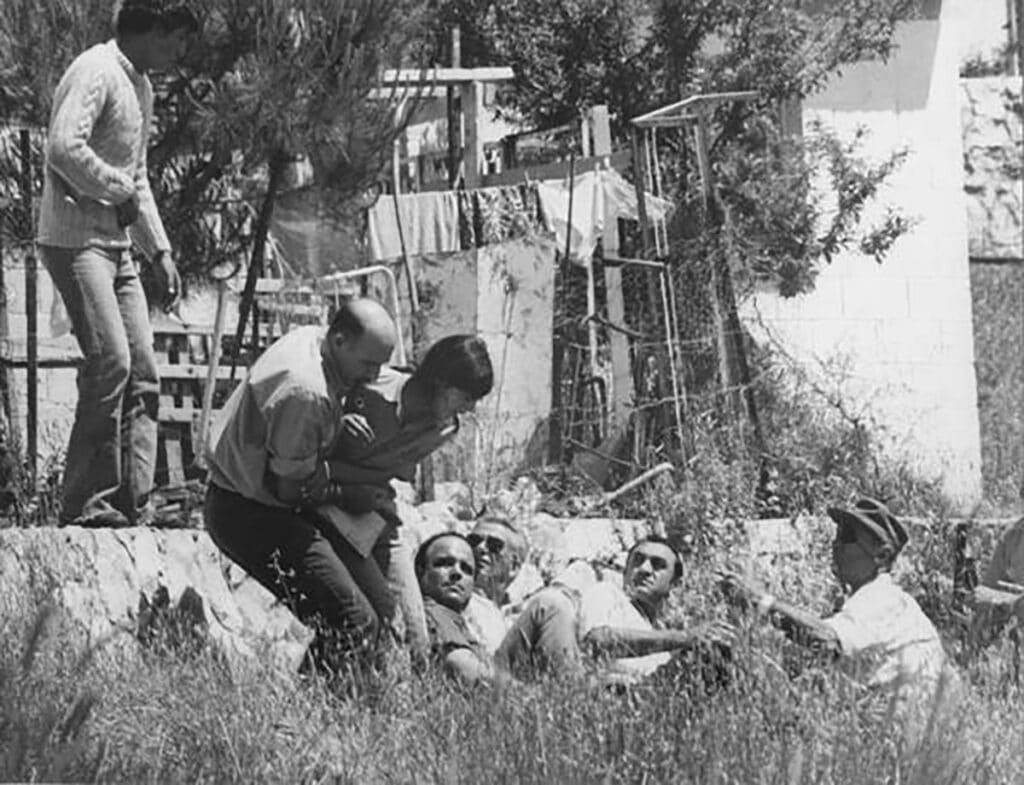
In the wee hours of May 13, 1974, three men crossed into Israel from Lebanon, loaded with machine guns, hand grenades, and explosives. Depending on who you ask, they were dressed as either IDF soldiers or Israeli police. Their victims were meant to feel safe, until they didn’t.
Who were the terrorists?
All three men were members of the Democratic Front for the Liberation of Palestine. If that name sounds familiar, it’s probably because you’re thinking of the Popular Front for the Liberation of Palestine, a different terrorist group. But the DFLP were Marxists, whose stated aim was the formation of a single Palestinian state “against all forms of class subjugation,” where “Arabs and Jews [have] the right to “develop their national culture” while being “hostile to colonialism, imperialism, Zionism, and Arab Palestinian reaction.” Their rosy vision of a single, peaceful, democratic state may have been more convincing if their tactics didn’t include murdering kids.
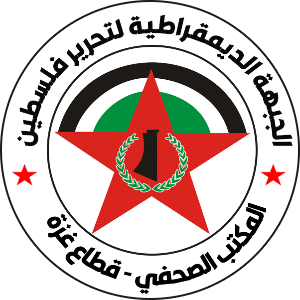
Okay, Noam, I hear you saying. This is a cute crash course on Palestinian ideology, but let’s get serious. Who cares what group they were part of, or what they believed? It’s a fair question. Honestly, I think it both does and doesn’t matter. Because on the one hand, the end result is the same: innocent people being targeted, used, and murdered. On the other, I think it’s important to understand the vast ideological differences between different Palestinian groups. From the start, Palestinians were ideologically fractured, splinter group after splinter group making their own demands. And that, I think, is a big part of why we still don’t have peace. They still have not had their Altalena moment. (If you don’t know what I mean by that…what are you waiting for?? Listen to our episode on the Altalena.) There’s still no one strong or influential enough to make peace with.
But their Marxism wasn’t the most interesting thing about these guys. No. The most interesting, and horrifying, thing about them was this. Two of the three were Israeli Arabs from Haifa. And at least one knew the north of Israel well. He had lived for a time in the northern Arab-Israeli village of Taibe and even worked at a restaurant in Tzfat. You know, I believe that it’s really hard to hate someone once you know them. Once you’ve experienced their culture or learned their language. But these guys, I don’t know, they’re the exception. Two were Israeli. They spoke Hebrew. They knew Jews. And still, they were able to murder both Jews and Arabs without hesitating. All in the name of building a democratic binational state. Lovely.
The Ma’alot massacre
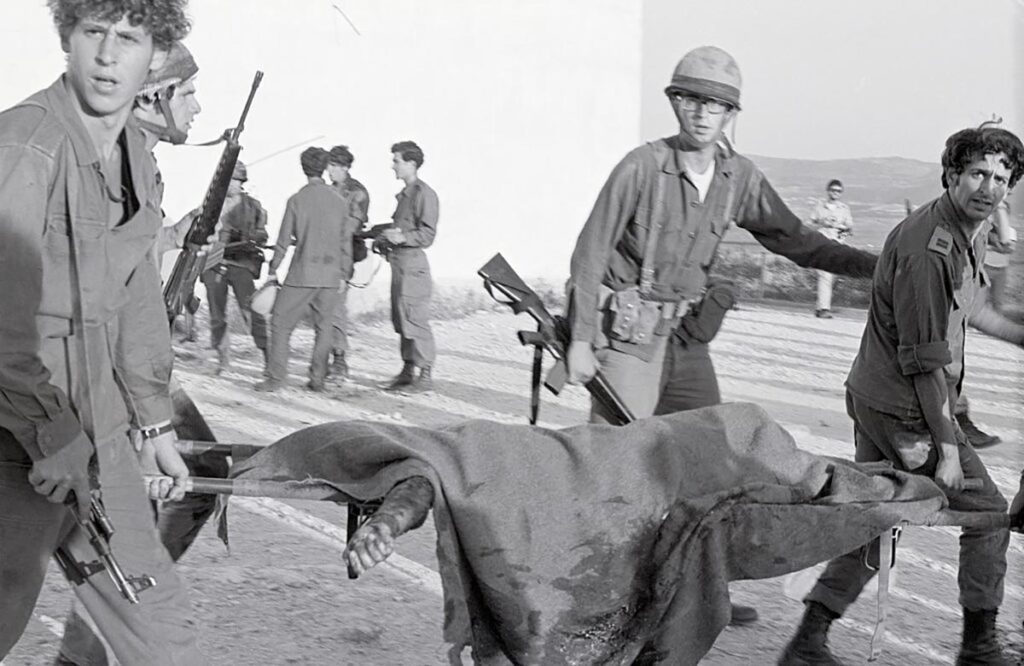
So back to May 13th, 1974. The three men spent all of the previous day hiding in a cave. They moved only under cover of night, heading towards Ma’alot, a so-called “development town” six miles from the Lebanese border. Most of the town’s Jewish residents were poor North African immigrants, raising first-generation Israeli children in a Jewish state.
But the terrorists’ first victims were not Jews. They were Arabs. At a quarter to midnight, just before May 13th bled into May 14th, Israel’s 26th Independence Day, a small truck made its way up the road where the terrorists lurked. Inside were eight Arabs: a male driver, and seven women on their way back from work. And actually, women is not the right word. Because three of the passengers were teenagers. Kids. The terrorists flagged down the truck, but the driver didn’t stop. So they opened fire, killing one woman and injuring every other person in the truck.
The Israeli authorities called to the scene thought that this was the attack. That the terrorists had completed their mission. So they centered their search efforts near the border, to catch the terrorists before they made it back to Lebanon. They didn’t realize that the shooting was just part one. A small-scale, hideous rehearsal before the main event.
The three terrorists reached Ma’alot at 2:30 am, where a single light burned in the window of a small apartment building. This was the home of Yosef and Fortuna Cohen and their three young children. Fortuna was heavily pregnant with their fourth. As the terrorists stomped through the building, looking for victims, Yosef opened the door. He was killed instantly in a hail of bullets, providing just enough time for Fortuna to hide their deaf-mute 16-month-old son, Yitzhak, knowing he couldn’t cry out. Her four and five-year-old were not as lucky. They must have heard the shots that killed their father. They must have cried and screamed as they, too, were shot along with their mother and unborn sibling.
Of the entire Cohen family, only five-year-old Biya and baby Yitzhak survived.
But the night wasn’t over for the three terrorists. They had a third mission to complete.
They were looking for a school. As they fled the Cohens’ building in the early hours of the morning, they came across a local janitor. Remember, they were dressed as either IDF soldiers or Israeli police, and they spoke fluent Hebrew. He had no reason to be suspicious when they asked him for directions to the school. Not until they shot him and left him for dead.
The Netiv Meir Elementary school should have been empty at 3:30 in the morning of Israel’s 26th Independence Day. But it wasn’t.
Between 100 and 115 students from a religious school in Tzfat, along with a few teachers, were bunking down there as part of an overnight field trip. Boys on the first floor. Girls on the second. They shouldn’t have been there at all, according to the students, they were supposed to sleep outside, under the stars. But the northern part of the country was on high alert. So the students and their teachers had been diverted at the last minute from their original route and asked to bunk down somewhere safer.
What a hideous, ugly irony.
Here’s one of the teachers describing the ordeal for the Israeli media: “At first I didn’t know what to do. It was a matter of seconds. I pounded on the door. It opened. I ran towards the window and said, Everyone after me! Jump out the window!”
The boys on the first floor were lucky. It was easier for them to escape. Many of the teachers, terrified, jumped with them. But not everyone managed to flee. 85 students, two teachers, and the medic remained in the building with the three terrorists.
The terrorists herded everyone into a classroom, which they booby-trapped, surrounding their hostages with explosives. Here’s how survivor Shula Binyamin-Rubin describes the next 16 hours: “They made everyone sit in the classroom. Eighty-something kids. And we waited. They didn’t let us talk. They didn’t let us go to the bathroom at first. But after that, each time, they’d take three kids and put them towards a window in the corridor. They’d shoot between our feet, so we’d cry and scream to the government, or to whoever was responsible for freeing the prisoners they wanted.” The terrorists sent out a student with their demands. Israel would release between 20 and 26 terrorists being held as prisoners by 6pm, or else they’d blow up the school with everyone in it.
To make matters even worse, the Israeli government was in something of a shambles. Prime Minister Golda Meir had resigned the month before, profoundly disheartened by the failure of the Yom Kippur War and Israel’s subsequent economic downturn. Israeli law dictated that her cabinet was forced to resign with her. The new government wasn’t poised to take power until June, so the decision rested on a prime minister, and a cabinet, who knew they were on their way out. Every person in Golda’s government was acutely conscious of their legacy. Did they want to be the government who let terrorists kill children? On the other hand, did they want to be the government that gave in to terrorists’ demands?
The 76-year-old Prime Minister was willing to negotiate, insisting that “one doesn’t wage war on the backs of children.” But her Defense Minister, legendary war hero Moshe Dayan, disagreed. The only way out of this situation, he argued, was to kill the terrorists and save the students. For Dayan, Israel would never be a weak country that bowed to terrorist demands.
The cabinet debated for fourteen hours. All the while, the students waited, knowing that any moment could be their last. Eventually, the Knesset agreed to the demands. They even brought 20 prisoners to the scene, blindfolded and bound, as though to prove they were serious. By some accounts, this is when the terrorists started dismantling the explosives. The students, though still terrified, breathed a sigh of relief. Soon their ordeal would be over. Soon they would get to go home.
But as the Knesset negotiated with the three terrorists, the army’s most elite unit was preparing to storm the building.
You might remember Sayeret Matkal from our episode on the Mossad last season. If you don’t, go back and listen. This super-elite commando unit had been around for less than 20 years. And yet, their exploits were already the stuff of legend. Only a year before, they’d sneaked into Beirut – dressed in drag, no less – and taken down several heads of the PLO. They were confident that they’d be able to storm a school, eliminate three terrorists, and save the hostages.
They were wrong. Fifteen minutes before the 6pm deadline, Sayeret Matkal made their way into the school from two separate entrances. A team of snipers watched their backs, ready to take out the terrorists.
An attempted rescue
Tactically, it seemed like a good plan. But things went wrong almost immediately.
The first team, which went in through the front doors, immediately took a volley of gunfire. And rather than engage in a protracted firefight, they threw a phosphorous grenade.
Sounds efficient, right?
But here’s the thing about phosphorous grenades. In addition to burning their victims, they create a lot of smoke. Smoke that blinded the IDF snipers and the second Sayeret Matkal team as they combed the school for the hostages. Blinded by the smoke, they went to the wrong floor. Worst of all, the snipers couldn’t get a clear line on the terrorists.
It took thirty seconds, maybe less, for the IDF to realize its mistake. But that thirty seconds was enough time for the DFLP.
“You’re going home now,” one of the terrorists reportedly said to the students.
Then they opened fire. A hail of bullets. A clutch of grenades. In thirty seconds, 26 people – 22 of them students under the age of 17 – were dead. Here’s Shula Binyamin-Rubin again: “A lot of kids died, a lot were wounded. Whoever was able… we climbed on top of the bodies and jumped out the window and ran towards the soldiers, if we could. Whoever couldn’t was evacuated to a hospital.”
Sayeret Matkal eventually made their way to the right classroom, where they killed the terrorists. The sight that greeted them was like something out of a nightmare. A news broadcast from the next day described the scene: “Broken furniture mingled with pieces of clothing. Large bloodstains. Cans of food and loaves of bread, a reminder of the trip that never finished. A silent witness to the drama that took place here.” Then-principal of the school, Shalom Ma’arti, described it like this: “The whole classroom was full of blood. They threw grenades at them. There was hair stuck to the walls, the girls’ hair. We had to scrape it off the walls. It was… it was horrible.”
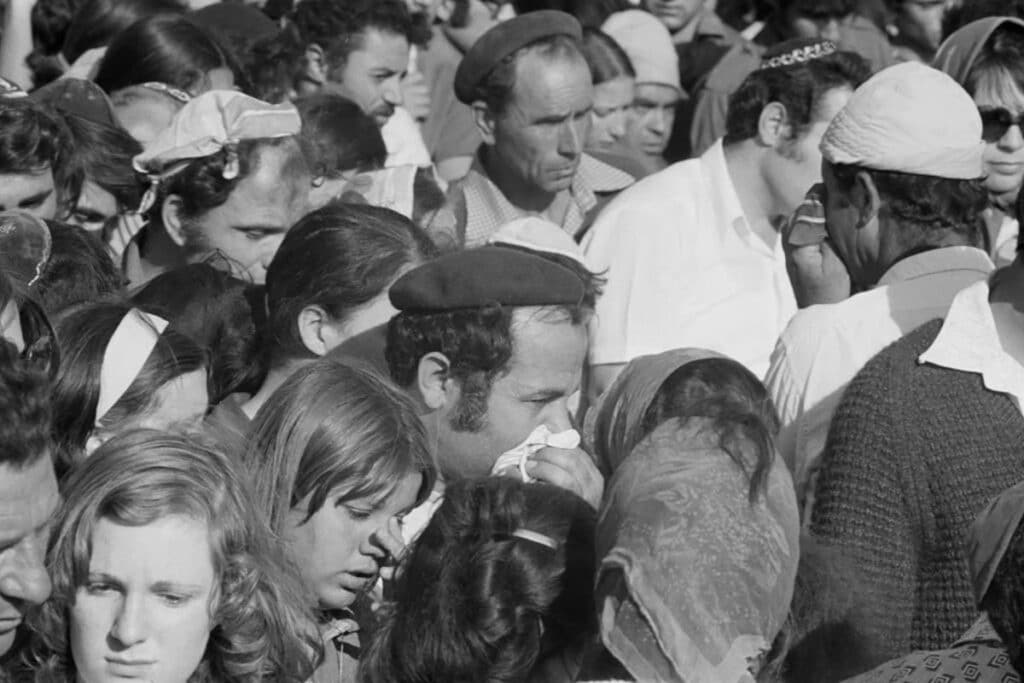
Equally horrible were the funerals of the next day. 26 caskets, most holding children. Parents and relatives wailing, collapsing onto the earth. Because how do you respond to something like this? How do you recover?
How the Jewish world responded
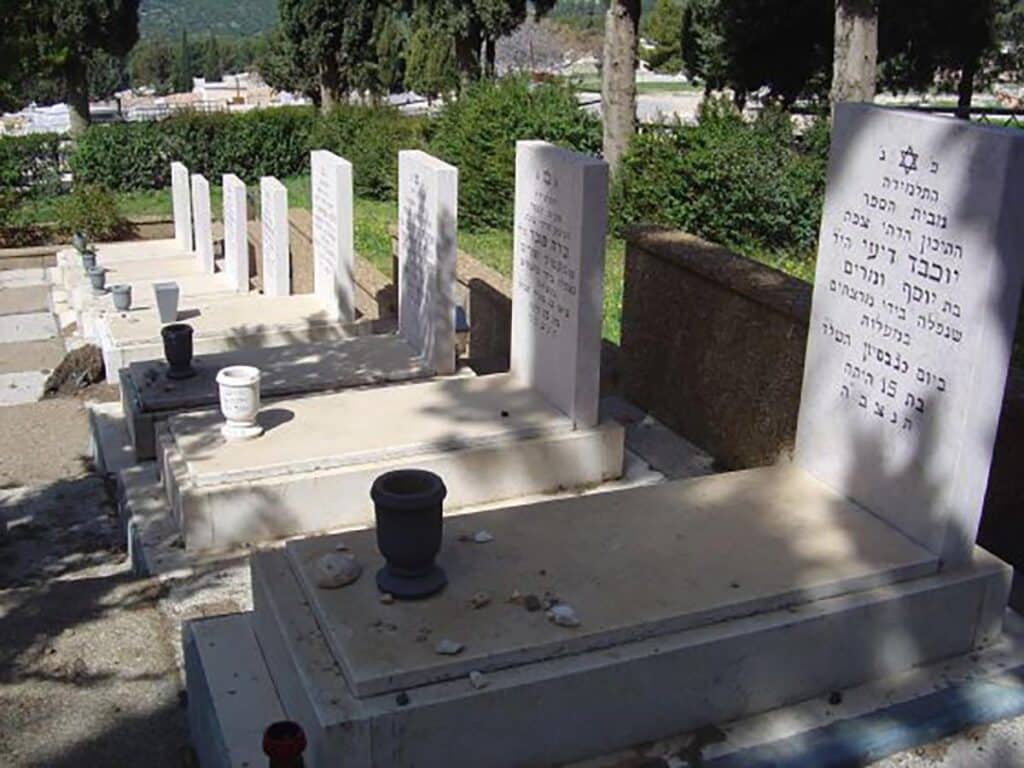
It’s been nearly 50 years. And still, the wound hasn’t healed. Not for the families of the dead. And not for the survivors, whose trauma haunts them to this day.
The global Jewish community was shocked. Ten thousand people protested in New York, some even chaining themselves to the fence surrounding UN headquarters. A few even beat up the Chairman of the Action Committee on American- Arab Relations, who happened to be passing by.
But other communities chose a different path.
You’ve probably heard of Chabad, also known as Lubavitch Hasidim. In the wake of Ma’alot, the Lubavitcher Rebbe called on his community to step up their efforts to bring world Jewry closer to Judaism. Rabbi Yosef Hecht was there on that first Shabbat after the massacre at Maalot. “That Shabbat, I remember the Rebbe coming in to the fabrengen. His face was awesome. The Rebbe spoke about bringing the Jewish people to deepen their actions of Torah and mitzvos, especially mitzvat mezuzah.” A mezuzah is a parchment scroll inked with Biblical verses and affixed to the right doorpost of Jewish homes and institutions.
And in response, the Lubavitch community took up the call. Big time: “We decided to rent vans and go out to the streets with microphones. We would stop on the most busy corners.” And there, young Chabad men would encourage fellow Jews to wrap tefillin, or light Shabbat candles, or stick mezuzot to their doorposts. Heck, you’ve probably seen these men around. “Excuse me, are you Jewish?” became their catchphrase. They spent their days doing all they could to bring their fellow Jews just a little bit closer to Jewish ritual.
They called their trucks “tanks against assimilation.” And to me, this kind of image is strangely beautiful. A tank can maneuver around any obstacle – even an obstacle as big as ignorance, apathy, or assimilation. This was how they responded to the murder of teenagers. Not with violence. Not with anger. But with a renewed commitment to Jewish education and pride.
And I like to think that the students, who were religious, would have approved, each mitzva sending the Jewish people a little bit closer to God.
So that’s the story of Ma’alot, and here are your five fast facts.
- Israel approached its 26th birthday in a bit of a quarter-life crisis. The Yom Kippur War had left the country severely shaken. The Prime Minister resigned in April, but the new government hadn’t yet taken control.
- Shortly before Israel’s Independence Day, three men from the DFLP sneaked through the Lebanese border into Israel, heavily armed and disguised as Israeli soldiers or police. Two of the men were Israelis who spoke fluent Hebrew.
- The three men started their killing spree by shooting up a van of Israeli Arabs, killing a 27-year-old woman. But instead of going back to Lebanon, as Israeli police had assumed, they went further into Israel. Their next stop was an apartment block in Ma’alot. There, they killed almost the entire Cohen family, leaving behind a 16-month-old boy and a badly wounded 5-year-old girl, then fled into the night.
- Their next stop was an elementary school, where they found over 100 religious high school students and their teachers bunking down as part of a field trip. Though some managed to escape, 85 were taken hostage. The terrorists demanded the release of tens of prisoners, most of them Palestinians. If the government failed to comply, they’d blow up the school with everyone in it.
- Prime Minister Golda Meir was ready to negotiate. She didn’t want to be remembered as the Prime Minister who “fought a war on the backs of children.” Her Defense Minister, Moshe Dayan, disagreed. So they split the difference. The government agreed to release the prisoners, but shortly before the deadline, an elite army unit entered the school to rescue the hostages. They failed. In under a minute, the terrorists murdered 22 students and four adults, leaving behind a wound that has never fully healed.
I’ve usually got a lesson prepared after the five fast facts and say this line, which you’ve come to know by heart, “Those are the facts, but here’s one enduring lesson as I see it.” But today’s lesson isn’t from me.
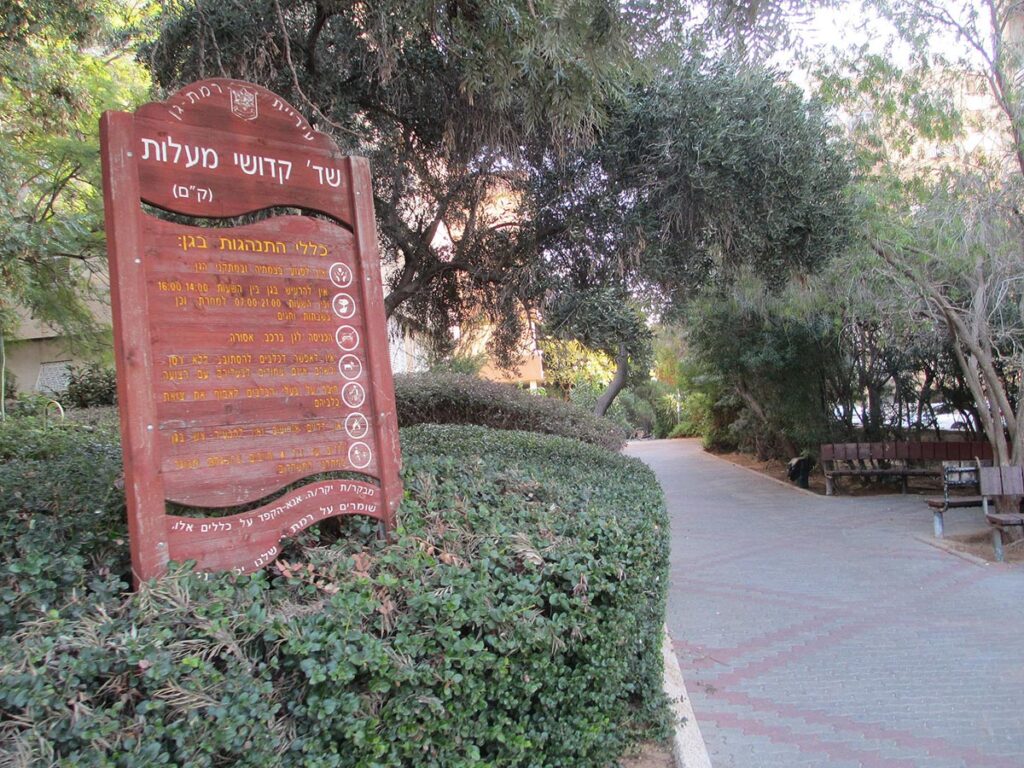
It’s from 15-year-old Ilana Turgeman – which some sources call Ilana Ne’eman – who was murdered in Ma’alot along with 21 of her classmates. Shortly before her death, she’d written her parents a letter, which I’m going to read to you in translation. I don’t know if Ilana was born this wise, or if her last few harrowing hours on earth granted her an unusual sensitivity. I do know we can all learn from her final words, no matter how old we are, or what our circumstances.
“Dear Mom and Dad, hello. It’s 11:25am, and I don’t know how many hours I have left to live, so I’m writing to you. I’m sorry, Mom, that I didn’t listen to you and went on the trip. Yes, I know, you didn’t force me to stay, but you were worried and preferred I didn’t go. But I went because I knew what I needed to do.
I wanted to say thank you for the education you gave me, and for the beautiful years I had, all thanks to you.
Right now, I am 15 and a half, and if I’m fated to die, I’ll die quietly, with honor and faith. Yes, faith, which you gave me. You always told me that without faith, life is dull and a lot more painful. And now, in these difficult hours, I have a lot of faith, and I also believe you were right.
Life doesn’t give much to a person. He can’t choose much – not when or where he’ll be born, or to which parents. But I was happy. I was a religious girl in the Land of Israel, with wonderful parents: you. I didn’t have many hours. I didn’t have that privilege, and I guess I won’t. But thanks to you, I passed tests of honor, both in the small, dark hours, and in the regular everyday hours.
Mom – don’t cry too much when I die.
When Rivka has her baby, name it after me – Ilan or Ilana. Give the baby the education you gave me, so he’ll be strong and know his life’s purposes, and why he was born.
I know your lives were difficult before and after I was born, and that when I die, they’ll be even harder. But always remember that the suffering always brought with it hours of joy and satisfaction.
I’m not crying. My eyes are dry.
It doesn’t hurt that I’m going to die, and I’m not sorry. When I say Shema Yisrael in my last hour, I’ll think about you. I was supposed to go on this trip. We can’t stop living life. The danger lies everywhere, and if Heaven makes a decree, it will happen. It’s better to live morally, and to be killed for the sake of sanctifying God’s name.
Please give this letter, which will be my last ever, to all our relatives to read, and send them my love. Wish all my friends and neighbors the best of luck. This is my last chance. In another hour, I’ll leave you. Goodbye forever. With much love, your daughter, Ilana.
Ilana, this episode is dedicated to you and I wanted to make sure that it was not just your relatives who read this letter, but the thousands of people who listen to our podcast.
Ilana was killed a few hours after she wrote that letter. Just as she requested, her sister Rivka did name the baby after her. Her nephew Ilan Shohat was Israel’s youngest-ever mayor, presiding over the city of Tzfat, where his aunt was born and buried.
I don’t know if he grew up knowing his purpose, as Ilana had hoped. But I do know that Ilana was right about one thing. We can’t choose our circumstances, or how much time we have. But we can choose how we spend our “small hours.” We can choose to live with honor, even in the darkest moments.
So in the words of American poet Mary Oliver: “what is it you plan to do/with your one wild and precious life?”